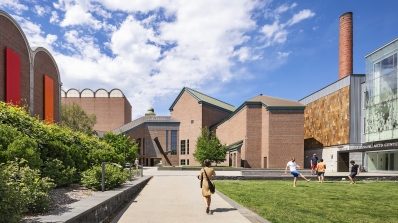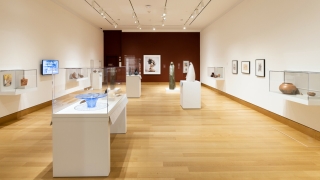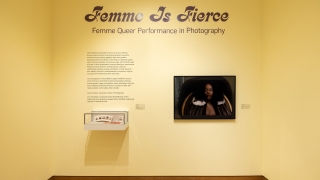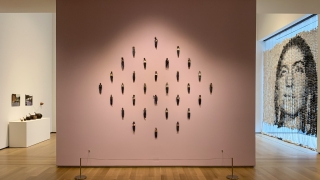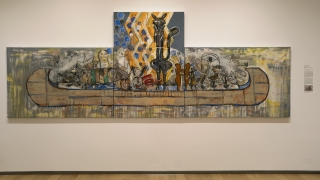Past Exhibitions
Unbroken: Native American Ceramics, Sculpture, and Design draws from the Hood Museum’s permanent collections to create dialogue between historical, modern, and contemporary works made by Indigenous North American artists. Curated by Dillen Peace ’19 (Diné) and Sháńdíín Brown ’20 (Diné), Diversifying Art Museum Leadership Initiative (DAMLI) Native American art interns, Unbroken explores themes of continuity, innovation, and Indigenous knowledges across time, and calls attention to the stylistic decisions made by artists and makers working across multiple mediums.
Femme Queer Gender Performance in Photography
Femme is FierceContemporary Native Ceramics
Form & RelationThis exhibition showcases the versatility of ceramics and the many forms it takes through the hands of six Indigenous artists from various regions within what is now the United States. Through their innovative and critical work, Anita Fields, Courtney M. Leonard, Cannupa Hanska Luger, Ruben Olguin, Rose B. Simpson, and Roxanne Swentzell wrestle with concepts such as community, identity, gender, land, extraction, language, and responsibility.
This Land: American Engagement with the Natural World explores artistic responses to the natural world by diverse American artists working from the early nineteenth century to the present. It is the first major installation of the museum’s historic American collection to be organized thematically, rather than chronologically. More significantly, it features not only Euro-American, African American, Latin American, and Asian American works but also, for the first time, traditional and contemporary Native American works hung alongside this early to contemporary "American" art. This collaboratively curated exhibition of approximately 160 works fills four galleries as it compels us to consider new perspectives on historical and contemporary art by diverse artists, Native and non-Native, and to reflect on our own relationship to place and land. How, for instance, have experiences of home and the natural world changed historically and in our own lifetimes? How have they already been impacted by unanticipated phenomena, such as the COVID-19 pandemic? What actions would help to provide all Americans a secure sense of home, in both the built and the natural environment?
The Jane and Raphael Bernstein Collection
A Legacy for LearningA Legacy for Learning: The Jane and Raphael Bernstein Collection comprises a series of exhibitions that individually and collectively celebrate the Bernstein family's gifts to the collection of the Hood Museum of Art over four decades. These shows present photography, paintings, prints, drawings, and sculpture by European, Japanese, and North American artists.
In spring and summer 2021, the museum features the Bernstein Collection installations Pinpricks and Pomposity: The Inventiveness of English Visual Satire, Landscape(d): Modern Photography and the Environment, and Lyrical Journey: Toko Shinoda.
In August 2021, the installations change over to Inuit Art | Inuit Qaujimajatuqangit, Both Sides of the Lens: Portrait Photography, and Mystic Peak: Selections from the Bernstein Collection of Japanese Art, through January 2022.
Trade Canoe: Forty Days and Forty Nights
Jaune Quick-to-See SmithTrade Canoe: Forty Days and Forty Nights is part of Jaune Quick-to-See Smith’s well-known Trade Canoe series, which she began in 1992 as a critical response to quincentennial celebrations of Columbus’s arrival to the "New World." In her Trade Canoes and other large-scale paintings, Smith often layers images, paint, text, and objects to convey entangled webs of history, colonization, and extraction that characterize the American experience. Within Forty Days and Forty Nights, Smith draws on imagery from the Christian Bible, Salish creation stories and homelands, art historical references, and pop culture. She creates a cacophonous visual narrative, signaling a possible future of mass flooding as a result of global climate change and rising sea levels. Through this painting and The Rancher, also on view in the exhibition, Smith invites audiences to engage in a complex dialogue and to reconsider the visual landscapes that shape our understandings of Native Americans.
